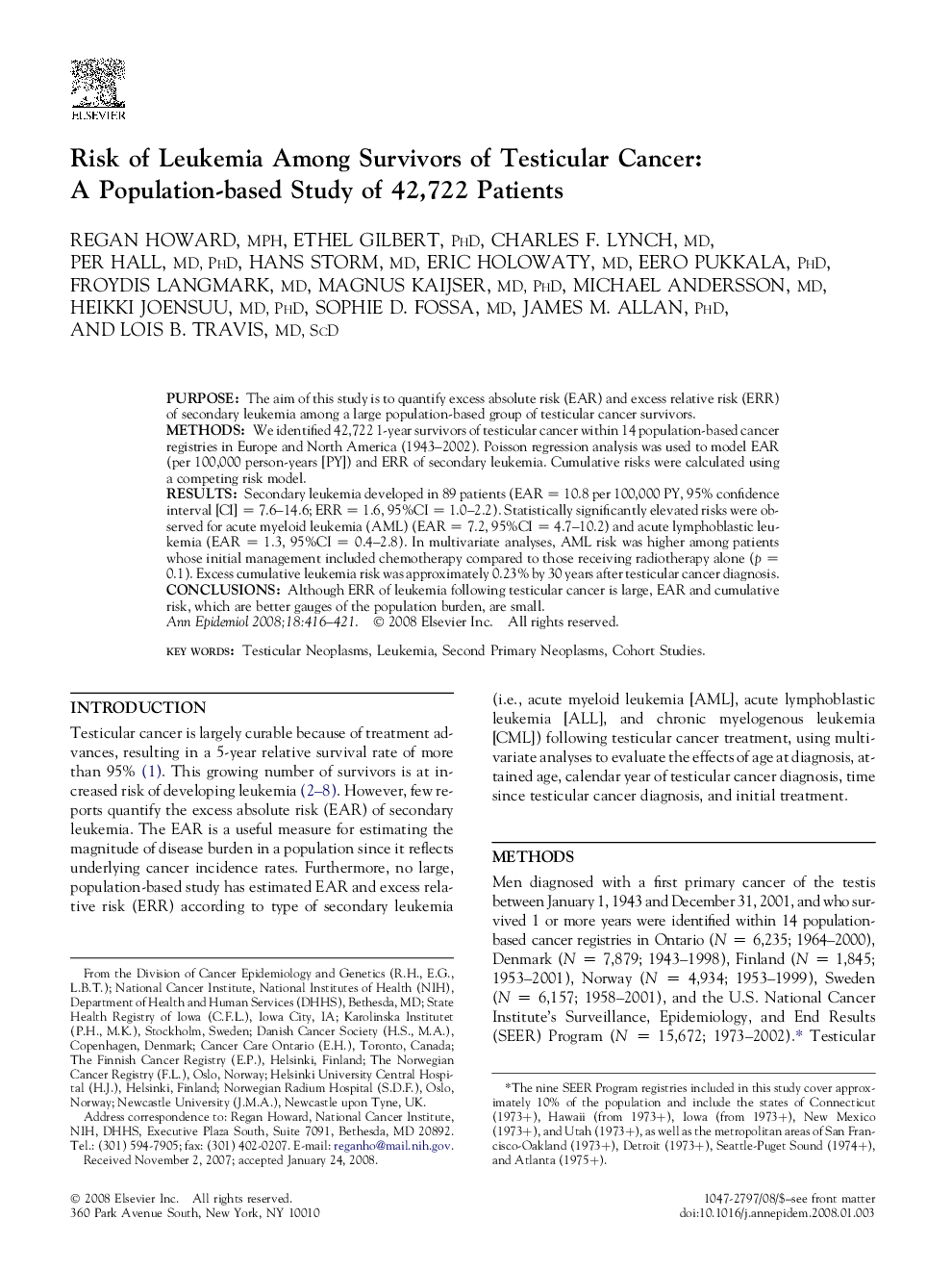| Article ID | Journal | Published Year | Pages | File Type |
|---|---|---|---|---|
| 3445361 | Annals of Epidemiology | 2008 | 6 Pages |
PurposeThe aim of this study is to quantify excess absolute risk (EAR) and excess relative risk (ERR) of secondary leukemia among a large population-based group of testicular cancer survivors.MethodsWe identified 42,722 1-year survivors of testicular cancer within 14 population-based cancer registries in Europe and North America (1943–2002). Poisson regression analysis was used to model EAR (per 100,000 person-years [PY]) and ERR of secondary leukemia. Cumulative risks were calculated using a competing risk model.ResultsSecondary leukemia developed in 89 patients (EAR = 10.8 per 100,000 PY, 95% confidence interval [CI] = 7.6–14.6; ERR = 1.6, 95%CI = 1.0–2.2). Statistically significantly elevated risks were observed for acute myeloid leukemia (AML) (EAR = 7.2, 95%CI = 4.7–10.2) and acute lymphoblastic leukemia (EAR = 1.3, 95%CI = 0.4–2.8). In multivariate analyses, AML risk was higher among patients whose initial management included chemotherapy compared to those receiving radiotherapy alone (p = 0.1). Excess cumulative leukemia risk was approximately 0.23% by 30 years after testicular cancer diagnosis.ConclusionsAlthough ERR of leukemia following testicular cancer is large, EAR and cumulative risk, which are better gauges of the population burden, are small.
